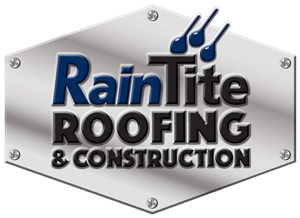In Rapid City, homeowners often face the harsh reality of hailstorms – an all-too-familiar occurrence capable of causing significant damage to residential roofing systems. This comprehensive guide will provide valuable information on understanding hail damage, safeguarding your home through proactive measures, identifying the signs of hail-induced problems, and seeking professional help for necessary repairs.
While protecting your property entirely from hailstorms may not be feasible, understanding the various aspects of hail damage and taking prompt actions following a storm can greatly minimize the potential issues and maximize your roof’s longevity.
Being proactive, vigilant, and responsive to hail damage can prove vital in preserving your home’s value, ensuring your family’s safety, and extending your roofing system’s lifespan.
Hail Damage Basics: Understanding the Science and Impact on Roofing Materials
Before delving into prevention and repair strategies, it’s essential to comprehend how hailstorms form and the variety of damage they can inflict on residential roofing. Hail forms when updrafts in thunderstorms carry raindrops into extremely cold areas, causing the droplets to freeze and create ice pellets. The size of hailstones can vary significantly, ranging from small pea-sized pellets to large grapefruits, directly affecting the severity of potential damage.
Different roofing materials respond differently to hail impacts:
1. Asphalt shingles: Hail can cause granule loss, bruising, or cracking, making the shingles more susceptible to leaks.
2. Metal roofs: Dents and punctures are the primary concerns for metal roofing, but overall, metal roofs are more resistant to hail damage than other materials.
3. Wood shingles and shakes: Hail damage can cause cracks, splits, or holes in wooden shingles and shakes, increasing the likelihood of leaks.
4. Tile and slate roofs: Hail can crack or break tiles, compromising the roof’s integrity and leading to water infiltration.
Preventative Measures: Fortifying Your Home Against Hail Damage
Although you can’t control the weather, there are steps you can take to fortify your home against hail damage:
1. Invest in impact-resistant roofing materials: Consider roofing materials that have been tested and rated for impact resistance, such as Class 4-rated shingles, metal roofing, or rubber shingles.
2. Maintain a healthy tree line: Ensure trees near your home are in good health and trimmed to minimize the risk of branches falling and causing damage during a hailstorm.
3. Conduct regular roof maintenance: Keep your roof in the best possible condition by inspecting for damage, promptly addressing minor issues, and ensuring proper gutter functioning.
Identifying Hail Damage: Common Signs and Effects on Roofing Materials
After a hailstorm, assessing your roof for signs of hail damage is crucial, as early detection will help address any issues before they worsen. Here are some common signs of hail damage to look for:
1. Dents or dimples in metal roofing, gutters, or vents.
2. Granule loss on asphalt shingles, which can expose the roof’s underlying materials and lead to accelerated aging or leaks.
3. Cracks or chips in tiles or wood shingles.
4. Missing shingles due to high winds accompanying hailstorms.
If you suspect any hail damage, contact a professional roofing contractor to inspect your roof and determine the necessary repairs or replacement actions.
Roof Inspection, Assessment, and Professional Repair
A professional roof inspection is vital following a hailstorm, as an experienced contractor can detect damage that may not be visible from the ground or to untrained eyes. Here’s how the process generally unfolds:
1. Roof Inspection: A professional roofing contractor will thoroughly inspect your entire roof and assess the extent of hail damage. This may include documentation such as photos and notes on problem areas.
2. Repairs or Replacement: Once the inspection is complete, the contractor will recommend the appropriate steps to address the damage, either by repairing affected components or, in severe cases, recommending a full roof replacement.
3. Insurance Claim Process: Many roofing contractors offer assistance with filing insurance claims for hail damage. They can submit the required documentation, including assessment reports and estimates, to streamline the process and improve the likelihood of claim approval.
Navigating Insurance Claims and Roof Repairs for Hail Damage
If you have insurance coverage that includes hail damage, you’ll need to file a claim and work with your insurer to determine the scope of repairs and reimbursement. Here’s a general outline of the process:
1. File the Claim: Notify your insurance company of the hail damage as soon as possible, providing them with the details and documentation obtained from your roofing contractor.
2. Adjuster Inspection: Your insurance company may send an adjuster to inspect the damage and confirm the repair recommendations made by your roofing contractor. Having the contractor present during this inspection is a good idea to address any discrepancies.
3. Review and Approval: Once the adjuster’s report is submitted, your insurance company will review the claim and determine the reimbursement amount or approve the necessary repairs or replacement.
Conclusion:
Understanding, detecting, and addressing hail damage is vital for Rapid City homeowners, ensuring protection for their property and family. Investing in preventative measures, conducting regular inspections, and promptly seeking professional help, you can safeguard your home’s value, integrity, and longevity.
Rely on RainTite Roofing & Construction, Rapid City’s roofing company of choice, for expert guidance in hail damage prevention, repair, and replacement. With our comprehensive knowledge and unmatched customer service, we’re committed to providing the best roofing solutions tailored to the unique needs of homeowners in Rapid City. Schedule a free, no-obligation consultation with our professional and experienced team, ensuring your home remains protected and secure through any storm.

